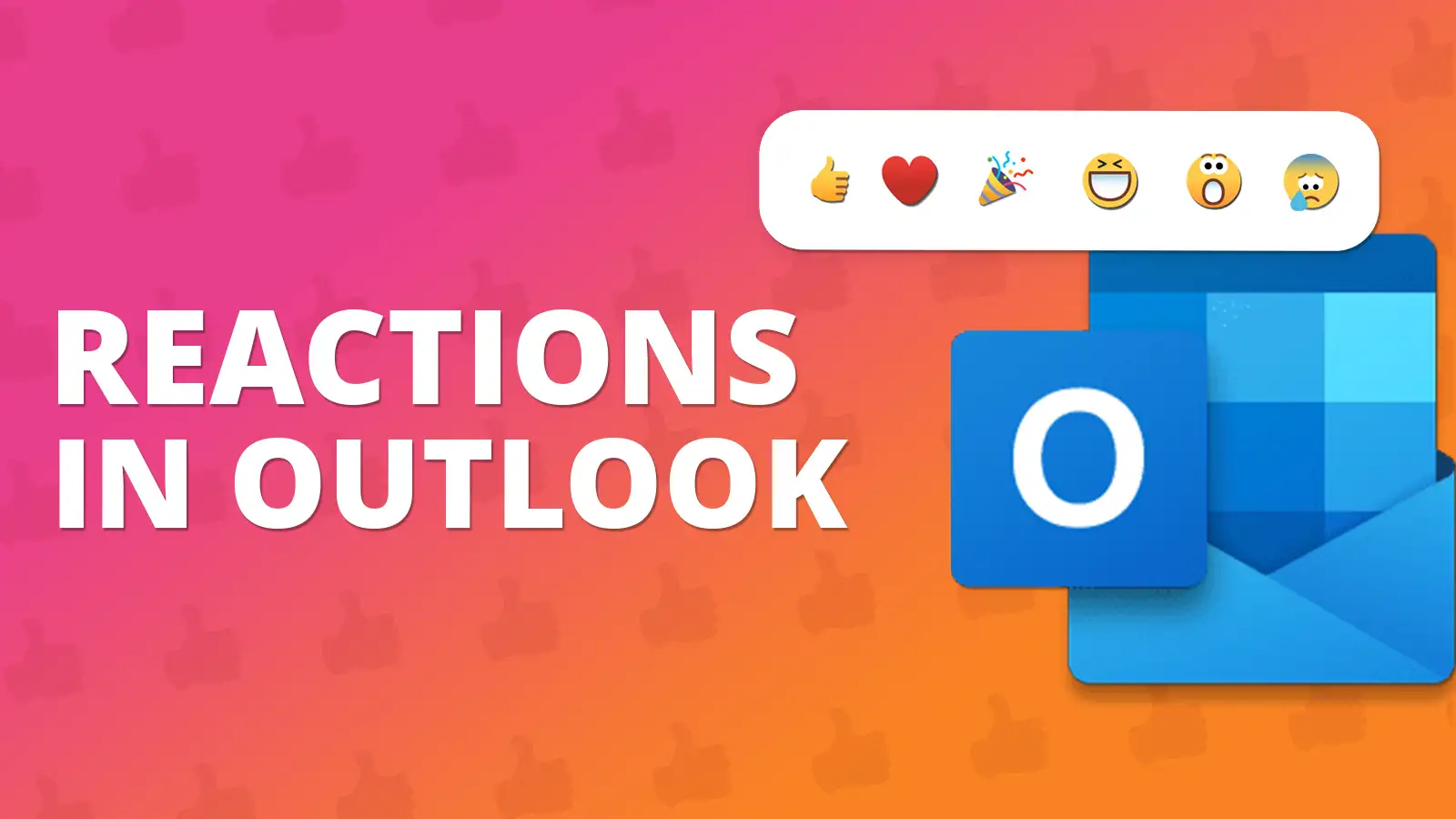Blog
CATEGORY: digital-marketing
Reactions in Microsoft Outlook

Since October 2022, Outlook users have been able to react to email messages. Since its release this feature has been gaining popularity amongst Outlook users.
With reactions being introduced to Outlook, you can show your reaction in just a few clicks without having to send any sort of reply email.
This feature works very similarly to the reactions to messages in Microsoft Teams, that we’ve all been used to for some time now.
Reacting to an email in Outlook
When you receive an email, you can send a reaction to the sender, select the reactions button near the top right of the message window and once hovering on this you'll see a gallery of all the different reactions you can choose from.
Once you have chosen your reaction, click on it and this will then be sent to the sender of the email.
Reactions in Outlook allow you to react in one of six ways: Thumbs up, Heart, Celebrate, Laugh, Surprised and Sad. When you have reacted to an email, everyone in the email thread who received the same email will be able to see your reaction if they are part of the same organisation.
Receiving a reaction in Outlook
If you are the sender of an email, you will receive a notification for each reaction you receive. You’ll also be able to see reactions to each email you’ve sent below the message controls in the top right corner of the email window. Hovering over each reaction will tell you who has used that reaction.
You are also able to see the history of your reactions received in your notifications feed in Outlook.
Want to know more?
You can choose from different thumbs up reactions to choose the one that better represents you. Outlook will remember your choice for next time.
If you aren't getting notifications or would like to switch them off, click the bell icon in the top right then click ‘Customise’.
Can you measure reactions to an email sent via e-shot?
Yes, to some degree. If you setup a reply address on your sender identity. If contacts react to your email. A notification email will be sent to the chosen reply address. This means it is possible to see who has reacted, although you aren't giving an exact number, you will have to count them up or record them yourself once they are received by the chosen reply address inbox. Below is an example of what email you will receive if someone reacts to your email.
It essentially copies the sent email, but a little strip is added saying who reacted to your message along with the type of reaction they gave.
What devices does it work on?
This new feature is currently available on Outlook for iOS, Outlook for Android, Outlook on the web, Outlook for Mac and new Outlook for Windows.
How could this feature apply to email marketing in the future?
Internal Comms:
For Internal Comms this feature can be used to see how others in the organisation have reacted to certain emails. As a sender of an email, it makes it easier for someone to quickly respond to an email that does necessarily need a response, but they can react to let you know they’ve read your email.
Inaccuracy of open rates:
With it becoming increasingly hard to track open rates of emails, this feature in the future could be a great way to replace open rates. Recipients could react to acknowledge they have read an email even if they haven't clicked on any links within the email.
Is email trying to compete with social media?
Being able to react this way reflects how reactions have worked on social media for some time now. Social platform WhatsApp had an update prior to this that allows users to react to received messages with emojis. This feature released by Outlook appears to be a way for them to begin to compete on the reactions and social side of things.
Why are emojis and reactions so popular now days?
Emojis have become extremely popular with web users in recent years, particularly with social media users and those that are involved in regular chat conversations. The key reasons behind this are that they are a universal language, they save time, they offer flexibility, can be fun and can be used to quickly and clearly indicate an opinion in your response.
Currently only Outlook uses a feature like this, but if Outlook sees success with the introductions of reactions, it's almost certain other email clients will follow with a similar sort of feature.
The introduction of reactions by Microsoft into Outlook is both a competitive move but also one that helps to meet the users' needs.
Outlook has clearly seen the potential in this and feels this step may be a natural progression for email and a step that allows them to get ahead of other email providers.
Solutions
Email marketing healthcheck
We are confident that we can help you, which is why we offer a free healthcheck to identify potential issues with your current programme and free advice on things that could be done to improve it.